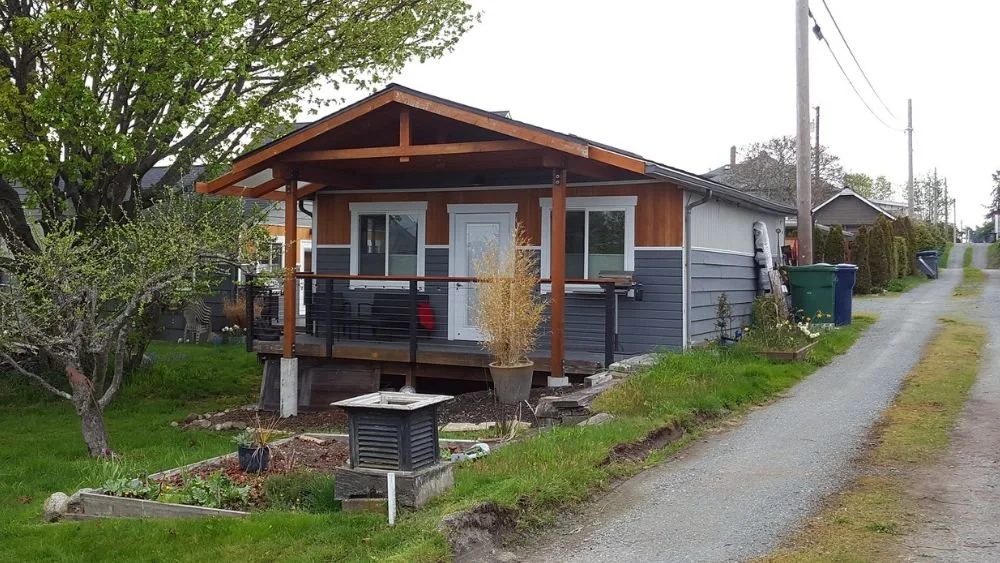Cities need more entry-level homes, but efforts to increase supply are often met with resistance. Iowa is considering a way around that issue: legalizing backyard cottages to increase housing supply without radically changing neighborhoods.
Read MoreHow do you provide the housing your community so desperately needs if you’re not wealthy enough to attract developers? If you’re Greenfield, Massachusetts, you start getting creative.
Read MoreMany city officials are struggling to provide affordable housing for their communities. In Denver, a group of city officials, community leaders and nonprofit organizations decided to try something different.
Read MoreThriving places are built by the people who live in them, and the strongest reforms are ones that empower these people to shape their own futures. Here are some of the people who are thriving because of their cities' empowering housing policies.
Read MoreLegalizing backyard cottages can improve residents' quality of life and help families stay connected, all while increasing housing supply and affordability without large-scale disruption to the community.
Read MoreWhat do you do when your city is full of illegal backyard cottages that no one can live in but you really need more affordable housing options? If you’re a city official in Berkeley, California, you recognize that one problem can address the other.
Read MoreIn many cities, permitting processes make it difficult to build entry-level housing. Zoning restrictions, local opposition and lengthy approvals all contribute to a lack of affordable homes. Massachusetts has taken a bold step to change that.
Read MoreOn this episode of the Strong Towns Podcast, Chuck answers housing questions submitted by Ohio State University students, covering topics from the history of the housing market to financing housing development.
Read MoreOne major consequence of the housing crisis is increased rates of homelessness. Real estate development and design experts in Tennessee are responding by designing multiunit housing prototypes that blend in with existing neighborhoods.
Read MoreDetached cottages and additional residential units are becoming legal in many places, but zoning laws and design decisions can stop people from building. Resimate seeks to solve that, performing instant analyses of lots and helping customers purchase a variety of eligible designs from small-scale developers.
Read MoreMany housing advocates celebrate large supplies of housing and low rents. However, this is only one stage of a larger boom-and-bust cycle and cannot be maintained. To break out of this cycle and sustainably improve housing accessibility, we need to redirect our focus to incremental development.
Read MoreIn 2017, California passed a law that was supposed to open up new levels of incremental development. But in many cities, zoning codes still make that development near-impossible. The city of Ukiah is working to change that.
Read MoreThere is nothing inspirational in calling the place you live as accessory to something else. It’s time we returned a sense of dignity to the smaller structures that people have called “home” for generations.
Read MoreOur cities need more housing, but perhaps even more urgently, our neighborhoods need more neighbors.
Read MoreA launch party was held in Kingston, NY, for the Plus One Home Program, an initiative that hopes to accelerate the creation of accessory dwelling units.
Read MoreThe momentum for ADUs gets a big boost from the federal government with a new policy to encourage homes with rental units.
Read MoreNew York City Mayor Eric Adams has proposed a substantial set of reforms to enable incremental and missing-middle housing solutions and add 100,000 new housing units to the city.
Read MoreAdd Phoenix, AZ, to the list of cities embracing accessory dwelling units as a tool to tackle the housing crisis.
Read MoreNew Zealand has proven what stateside housing advocates have been theorizing for years: Loosening restrictive zoning rules can increase housing supply and stabilize rents.
Read MoreOn this episode of The Bottom-Up Revolution, we catch up with a Local Conversation leader whose initial gathering sparked a movement that led to his city changing its zoning code.
Read More



















